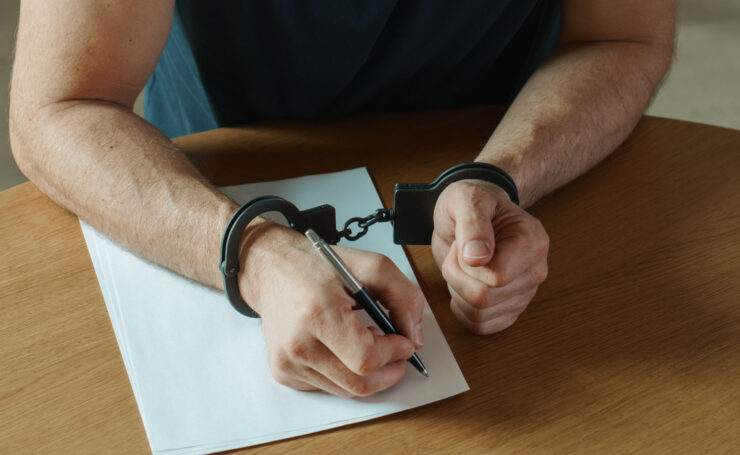When a person is arrested and charged with a crime, they may be held in jail until their trial. If the defendant cannot afford to pay for their own release, they may be able to get bail. This is money that is paid to the court in order to secure the release of the accused until their trial date.
If the defendant fails to appear for their trial, they will forfeit their bail and a warrant will be issued for their arrest. In some cases, a bail bondsman may post it on behalf of the accused. If the defendant fails to appear for their trial, the bail bondsman will be responsible for paying the full amount of bail to the court.
How Does Bail Work in the United States?

The bail bond company will post bail on behalf of the defendant. In exchange for this service, the company will charge a non-refundable fee. The fee is typically 10% of the total amount. For example, if bail is set at $10,000, the company will charge $1,000.
If the defendant fails to appear for their court date, the court will issue a warrant for their arrest and they will forfeit their bail. This means that they will owe the full amount to the court and they may also be subject to additional penalties.
If you need Bail bonds Monroe County information, you can check it online or look for a company in your area.
Different Types of Bail
There are a few different types of bail that a person can post in the United States. The types are generally based on the severity of the offense and the criminal history of the defendant.
– The first type is unsecured bail. This type does not require any money to be posted. The court will release the defendant on their own recognizance with the understanding that they will return for their court date. This type is typically only used for low-level offenses and first-time offenders.
– The second type is secured bail. This type requires collateral, such as property or cash, to be posted in order to secure the release of the defendant. The amount of collateral required is typically 10% of the total bail amount. If the defendant fails to appear for their court date, they forfeit their collateral and a warrant is issued for their arrest.
– The third type is surety bond. A surety bond is when a professional bondsman posts bail on behalf of the defendant. The bondsman typically charges 10-15% of the total amount as a fee for this service. If the defendant fails to appear for their court date, not only do they forfeit their collateral, but they are also responsible for paying the bondsman’s fee.
– The fourth and final type is cash bond. As you may have guessed, this type of bond requires cash to be posted in order to secure the release of the defendant. The entire amount must be paid in cash and if the defendant fails to appear for their court date, they forfeit the entire amount.
Who Pays for Bail?

If you are arrested and charged with a crime, the court will set a bail amount. This is the amount of money that you must pay in order to be released from jail until your trial. If you cannot pay it, you may be able to use a bail bond.
This is a type of insurance that pays the amount if you do not show up for your court date. The company that provides this service will charge you a fee (usually 10% of the bail amount), and may require collateral, such as a house or car.
If you do not have the money to pay for a bail bond, you may still be able to get out of jail by asking a friend or family member to post bail for you.
What Happens if You Fail to Appear for Your Court Date?
If you fail to appear for your court date, a warrant will be issued for your arrest. This means that if you are stopped by the police for any reason, you will be taken into custody and brought to court. If you posted bail, the court will keep the money and may issue a new warrant with a higher bail amount.
If you are facing criminal charges, it is important to show up to your court dates. An experienced criminal defense attorney can help you navigate the legal system and ensure that you take the necessary steps to protect your rights.
Bail Reform

Bail reform refers to changes made to the way in which bail is set and/or paid in order to make the system more equitable. It can take many different forms, but some common examples include increasing the transparency of how bail is set, eliminating money bail altogether, or providing alternatives to money bail such as release on recognizance or pretrial services.
The goal of this reform is to make the system more fair and just, particularly for low-income defendants who may not be able to afford bail. This is an important part of criminal justice reform efforts in the United States.
One of the most controversial aspects of the reform is the elimination of money bail. This means that defendants would no longer have to pay money to be released from jail before their trial. Instead, they would be released on their own recognizance or with pretrial services. Some opponents of this reform argue that it would lead to an increase in crime, as defendants would be more likely to skip court if they did not have any skin in the game. Others argue that it would lead to more people being incarcerated pretrial, as judges would be more likely to deny release if there was no financial incentive for the defendant to show up for court.
Conclusion
If you’re facing criminal charges in the United States, you may be wondering how bail and bail bonds work. This guide will explain everything you need to know about it, including how to get released from jail before your trial and what happens if you can’t afford to pay bail. Understanding the ins and outs of the bail system is crucial if you want to avoid spending time in jail awaiting trial.

